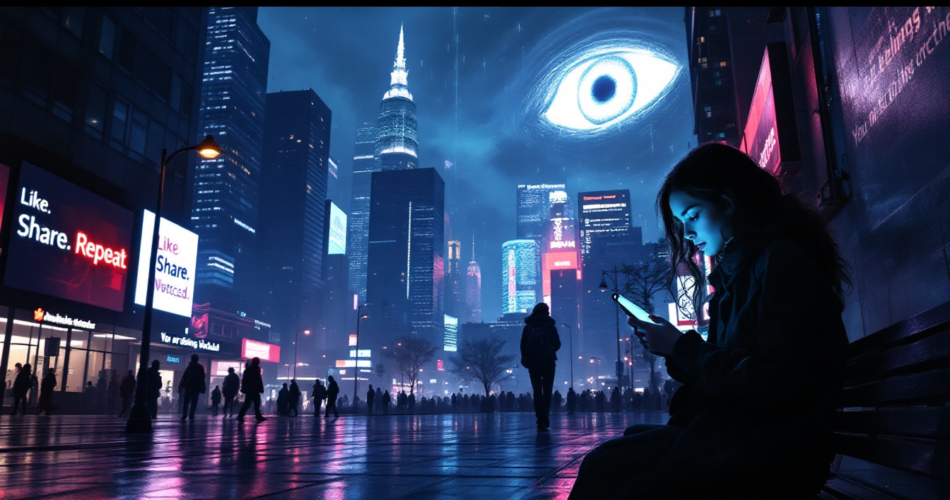From the moment we wake up to the last second before sleep, social media platforms have a tight grip on our attention. By leveraging principles of neuroscience, these dopamine-driven platforms are reshaping human behavior and mental health at an unprecedented pace. The constant lure of notifications, the thrill of viral trends, and the satisfaction of accumulating likes are no accident—they’re all calculated to keep users engaged for as long as possible. As the rise of dopamine-driven platforms intertwines with the history of social media addiction, we must uncover how this shift has fundamentally altered our focus, habits, and mental well-being. This article explores the evolution of these platforms, their psychological impact, and the digital trends shaping modern behavior. Let’s dive in.
Table of Contents
- What Are Dopamine-Driven Platforms?
- A Timeline of Social Media Addiction
- The Digital Trends Shaping Our Behavior and Focus
- Comparing Past vs. Present Screen Time Habits
- The Rise of Short-Form Media and Instant Gratification
- FAQs
- Conclusion
What Are Dopamine-Driven Platforms?
Dopamine-driven platforms are digital ecosystems designed to trigger the release of dopamine—often referred to as the “feel-good” chemical—in the brain. These platforms use algorithms, endless feeds, and notification systems to create a cycle of reward and reinforcement, ensuring users keep coming back for more.
How They Work
At the core of these platforms are algorithms calibrated for maximum engagement. By analyzing user behavior, they serve up hyper-personalized content that appeals to specific interests and emotions. Notifications act as micro-rewards, prompting users to dive back into the cycle of scrolling, posting, and engaging.
Psychological Effects
This design exploits the brain’s natural reward systems, creating dopamine loops that fuel addictive behaviors. Over time, individuals can experience a dependency on the quick hits of satisfaction these platforms provide, raising concerns about long-term mental health implications and focus deterioration.
Learn more about the mental health effects of social media
Read this study on dopamine and social media
A Timeline of Social Media Addiction
The Early Days of Social Media
The seeds of social media addiction were sown in the mid-2000s with platforms like MySpace and Facebook. These early platforms introduced people to online communities, creating the foundation for modern connection and interaction.
Key Milestones
Social media dependency intensified with the advent of the smartphone, making constant access to platforms like Instagram and Twitter a norm. Features such as likes, streaks, and notifications gamified the experience, further reinforcing user engagement.
The Rise of Viral Culture
Viral trends, like videos and memes, have supercharged social media’s addictive nature. The unpredictability and excitement of going viral add another layer to dopamine-driven behaviors, fostering a culture of constant comparison and validation.
Explore the history of viral culture
Learn about the evolution of the internet
The Digital Trends Shaping Our Behavior and Focus
Screen Time and Focus Deterioration
The shift from text-based platforms to video-dominated short-form media, such as TikTok and Instagram Reels, has profoundly impacted attention spans. Users now spend hours consuming fast-paced, bite-sized content, making it increasingly difficult to focus on longer-form tasks or activities.
Cultural Shifts in Behavior
Millennials and Gen Z engage differently with technology, with Gen Z favoring speed and novelty over depth. This trend reflects broader societal normalization of instant gratification and the erosion of patience for slower, more deliberate experiences.
Mental Health Implications
Prolonged exposure to curated content—highlighting idealized lifestyles—fuels anxiety and feelings of inadequacy. Moreover, the overwhelming amount of information contributes to cognitive overload and decision fatigue.
Read about technology’s effects on mental focus
Explore digital wellness advocacy efforts
Comparing Past vs. Present Screen Time Habits
The Evolution of Technology Use
Twenty years ago, technology primarily meant desktop computers and email. Today, people carry smartphones loaded with endless distractions, drastically increasing screen time.
TV Addiction vs. Social Media
While TV used to dominate leisure time, today’s social media addiction mirrors similar fixation habits. However, the level of personalization provided by algorithms makes modern platforms far more gripping.
Compare generational tech habits here
The Rise of Short-Form Media and Instant Gratification
Why It Works
Short-form content is visually stimulating and delivers quick dopamine hits, making it nearly impossible to resist. Platforms like TikTok use recommendation algorithms to keep users engaged in a constant loop of fresh and exciting material.
Mental Health and Future Trends
Despite its popularity, short-form media may be fostering stress and reducing people’s ability to process or engage with long-form content. As creators adapt to these trends, we might see an even greater divergence in content consumption habits.
See how short-form media is shaping 2023 trends
Read about the popularity of short-form media
Frequently Asked Questions
What Are Dopamine-Driven Platforms?
They are platforms designed to exploit the brain’s reward systems through features like notifications and algorithms, encouraging repetitive engagement.
When Did Social Media Become Mainstream?
Social media entered mainstream use in the mid-2000s with the rise of platforms like MySpace and Facebook.
How Do Short-Form Media Trends Impact Mental Health?
Short-form media increases stress and overstimulation, while reducing the capacity for deep focus and thoughtful reflection.
What Are the Long-Term Effects of Social Media on Focus?
Long-term effects include heightened distractions, diminished attention spans, and increased struggles with mental well-being.
How Can We Manage Social Media Use Effectively?
Implementing mindfulness-based digital strategies and setting screen time boundaries can help reduce overdependence on these platforms.
Conclusion
The rise of dopamine-driven platforms has reshaped human behavior, introducing unprecedented challenges related to mental health and focus. As short-form content and instant gratification trends continue to dominate, it is vital to prioritize awareness and digital well-being. By understanding the psychological impacts and embracing mindfulness, you can achieve healthier, more balanced screen habits. Take control of your digital life today.

